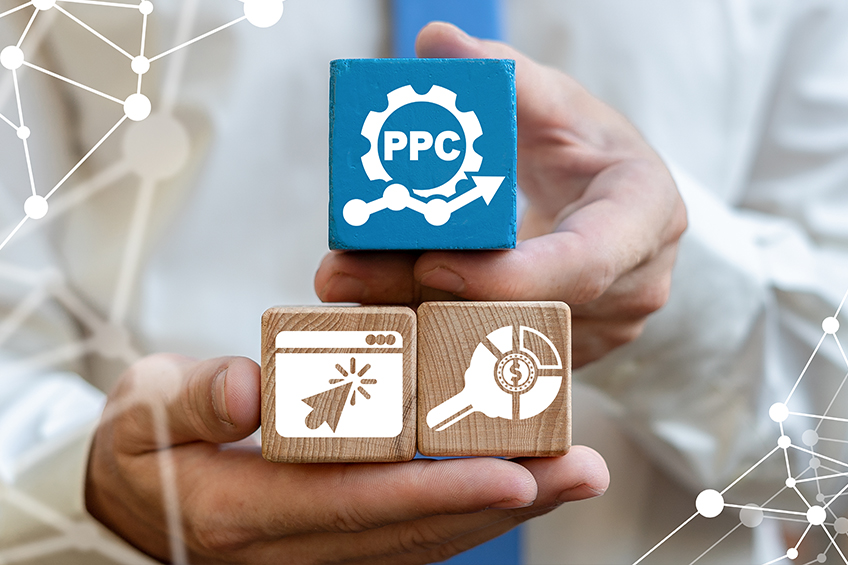
Consumers no longer move in a straight line to make a purchase. They resort to their gadgets for fast answers. They will search on platforms like Google for precisely what they want and what they want companies to provide. Every time these searches are conducted, consumers are expressing intent.
Marketing for intent may appear to be simply another choice in an extensive marketing toolset. But in truth, it is the latest technique in digital marketing for a variety of practical reasons. It is a very adaptable marketing technique that aids businesses gain new clientele with more accuracy than ever before.
Accuracy is especially crucial for marketers. Businesses are working with tighter budgets in the current situation of the Covid-19. People and businesses have now developed more cautious spending habits, as a response.
What is intent marketing?
Intent marketing is the technique of promoting products and services dependent on a consumer’s indicated intent to make a buying decision. Because data is frequently aimed towards keywords, intent marketing is extremely effective in search marketing, either paid or organic.
Intent marketing allows firms to spend their money more wisely. This is by generating higher conversions than they would with more generic techniques. An example of such a technique can be – targeting that is based demographically. Businesses that use data to analyze consumer intent and then match marketing to business goals will contact customers at critical periods. Therefore, they will be able to increase sales as a consequence.
Which business can use intent marketing?
What is crucial is that marketers ought to be concerned with more than simply purchase intent. Reacting appropriately to audience intent is what makes people take note of your business. This is regardless of where they are in the buying journey. This could be on Google, other sites, and even on social media platforms.
Companies that use intent data marketing in their strategy can identify their target customers. They can build a clearer, more precise picture of their consumers’ requirements. There are several instances of purpose marketing available.
For example, if a company identifies that a visitor to its website is interested in purchasing, it may give on-the-spot intent-based marketing. It is also possible that advertising will be presented to the user even after leaving the site. This type of advertising is usually called retargeting because it aims for the same people many times.
Marketing that is Intent driven can also take various forms. Depending on what information is held about the person, intent-based methods can include:
- Emails
- tailored chat replies on websites
- Pop-ups
Whenever it concerns keyword research, keyword intent is without a doubt the essential notion. It enables businesses to better fulfill the demands of their consumers. It also allows them to adapt their material and website content to their objectives.
Types of keyword intent
There are four different forms of keyword intent, and each determines how businesses use them and at what specific stages:
Navigational Intent
Navigational searches indicate that the user wishes to locate a certain website. The user is looking for a well-known item and is utilizing a search engine to find it.
In a navigational search, there is only one correct answer.
For example: When internet users input terms that include a firm’s brand name, they are most likely looking for the company’s website. The company name will act as a navigational signal.
Informational Intent
The individual searching has a query and is looking for an answer. The question asked acts as an informational signal for marketers. With informational intent, it’s not a good idea to consider selling anything to the audience immediately, as they are not in the buying stage.
However, these informational signals or attempts at acquiring information may be helpful. They can be used for creating restricted material and gathering email addresses. Searches with solely informational intent may include descriptors such as – How to/ The best way to/ Why/ and so on.
Transactional Intent
Transactional intent is located midway between informational and commercial intent. In other words, the questions might reflect both the intent to purchase and the desire to learn more about the topic or a product.
With the appropriate content and arrangement, transactional intent searchers may lead to a buy. On the other hand, the audience might be persuaded to buy later, down the conversion funnel.
Commercial Intent
Commercial intent can also be referred to as “purchase now” intent. Commercial signals can indicate a great desire to take action on the side of the searcher. This could be to join, buy, subscribe, or more.
The usual keyword for commercial intent searches can be – Buy/ Deals/ Coupon code/ Free shipping/ and more. As a result of the type of searches, individuals are likely to purchase or to take action.
How does intent marketing help businesses succeed in the time of covid?
Businesses recognize the possibilities that data provides. As a result, sales and marketing teams are continuously on the lookout for data that will help them complete more transactions.
Intent marketing allows firms to analyze intent data to discover new sales possibilities. Intent data displays a variety of variables and purchasing signals to marketers. In this case, they can assess whether a user should be targeted or not. Other ways in which intent marketing has helped companies are explored below.
Defining the ideal customer
Marketers can quickly detect a client’s interest in a product by examining their behavioral patterns. These could be website clicks and regularly visited internet sites. This enables marketers to discover an ideal consumer.
A consumer that is specifically interested in purchasing their items. They will know if the audience is worth the targeting. Eventually, it will allow them to make an increase in their profits.
If you use an intent data-driven marketing approach, you’ll know what your target audience is searching and seeking before they reach your company. With focused advertisements and outreach initiatives, addressing audience queries will be easy. Understanding purpose marketing allows us to concentrate on the relevant leads at the right moment.
Real-time personalization
Marketers can customize their offerings for their consumers in real-time by combining big data tactics and machine learning. For example, a section on Amazon, “customers who bought”, actually assists shoppers in seeing, understanding, or purchasing a particular product of interest.
Improve customer engagement
Data may give useful pointers into who your consumers are. It can also provide solutions to a variety of other inquiries about their interests. Collected data assists marketers in analyzing their consumers’ take and involvement with a specific product. It can also help them in understanding how their audience interacts with certain internet sites.
With intent marketing, you gain a far better understanding of your leads’ purchasing process. Internal results and other intent data solutions can assist you in identifying what sort of content your prospects are browsing for on the internet. The collected information can be used to influence your marketing approach.
Break out of the funnel
Big data-driven technologies assist marketers in determining which piece of information is efficient. This is in terms of improving prospects down the marketing funnel. Furthermore, it assists small companies in identifying and emphasizing which piece of content is crucial for closing purchases.
Nowadays, the typical consumer follows an undefined path in which they study and select a brand. This is before making a purchase many days or weeks later. When you adhere to outdated marketing standards, you miss out on possibilities to influence potential consumers.
Better your content.
Every day, almost 4 million blog articles are written and published. With so much material on the internet, yours may easily be drowned out. If a piece of material ranks first on the SERP for a particular query, it will receive more traffic. This will be reinforcing the search engine’s opinion of it as the best content to answer that issue.
Intent marketing is quickly becoming a fantastic and critical approach for marketers looking to engage their clients properly. The key to intent marketing is to think about how data analytics methods may be used to identify indications of intent. This could be how intent marketing is performed. Furthermore, the advantages of intent marketing for your company.
Intent marketing – the answer for marketers in the age of covid
The majority of intent-based advertising is dependent on external data. Intent data sheds light on what your intended audience is looking for on external websites. 67% of purchasers conduct internet research before making a purchase.
The act of customizing marketing efforts to clients’ requirements with specific intentions helps remove the element of the guesswork from the process.
Intent-based marketing is difficult, but it is worthwhile. The key is to learn to set away biases and simply utilize the given data. You must recognize that your customer may not be who you believe they are, or that there may be more potential group targets.
Intent-based marketing is designed to assist businesses in analyzing current demand. Consequently, you may interact with your consumers’ current desires and customize your content to their reasons. In addition, examining intent data might help you stay ahead of your rivals. You have an edge if you understand why your users are there.
Furthermore, with intent-based data, you instantly bypass the awareness step. You proceed to the process of making critical judgments. This improves the efficiency of your marketing operation.






